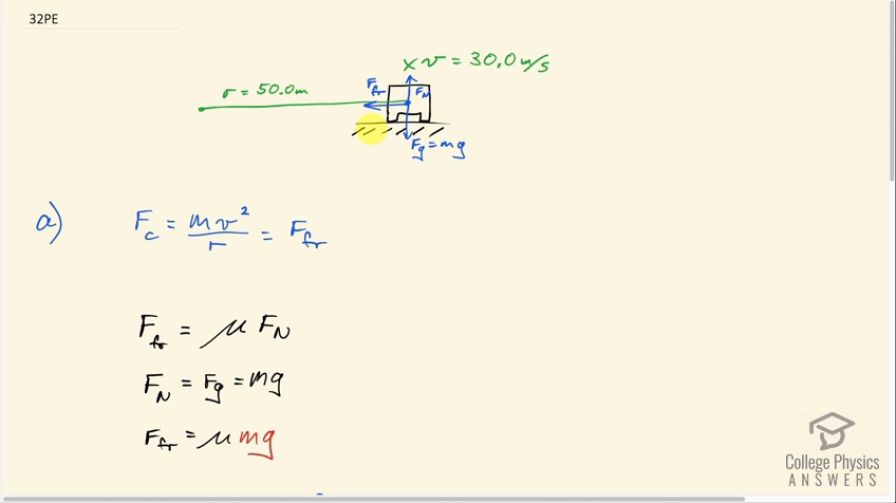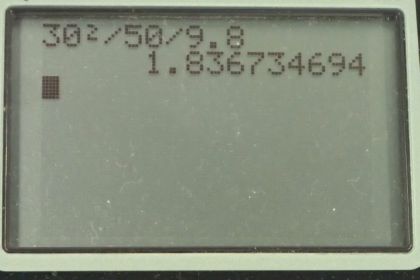Question
(a) Calculate the minimum coefficient of friction needed for a car to negotiate an unbanked 50.0 m radius curve at 30.0 m/ s.
(b) What is unreasonable about the result?
(c) Which premises are unreasonable or inconsistent?
Final Answer
- significantly exceeds the accepted value of 1.0 for rubber on dry concrete.
- It is not reasonable to take an unbanked curve so fast.
Solution video
OpenStax College Physics for AP® Courses, Chapter 6, Problem 32 (Problems & Exercises)

vote with a rating of
votes with an average rating of
.
Calculator Screenshots
Video Transcript
This is College Physics Answers with Shaun Dychko. We are going to calculate the coefficient of friction that's needed to get this car around a curve of 50.0 meters on an unbanked curve going at a speed of 30.0 meters per second. So the free body diagram has a normal force straight up and gravity straight down and friction force is to the left. Friction force is providing the centripetal force which we have a formula for which is mv squared over r and friction force can also be written as the coefficient of static friction multiplied by the normal force F N but F N directly balances gravity, there's no component business required since there's no banking of this curve. And so the normal force is mg and so we substitute mg in place of normal force in this friction force formula so friction force is μmg. So we can say μmg being the friction force equals the centripetal force mv squared over r— it is the centripetal force. And we divide both sides by m and then we get that μ or mg I should say and we get to μ is v squared over rg, the m's cancel. So we have μ then is 30.0 meters per second squared divided by 50.0 meters times 9.8 meters per second squared which is 1.84. Now if look at table [5.1], we can see the coefficient of static friction for rubber on dry concrete is 1.0 and this value of 1.84 significantly exceeds what is possible for rubber on concrete and so that means it's not reasonable to take an unbanked curve so fast.
